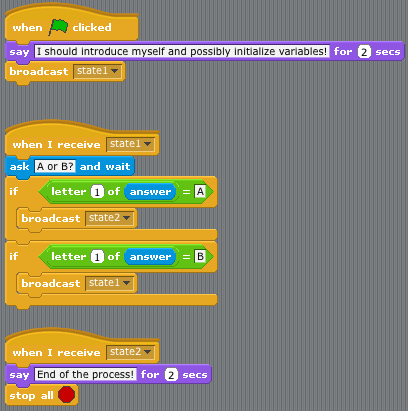 |
| http://tinyurl.com/o8bndnAdd two letters |
Tuesday, December 15, 2015
Thursday, December 10, 2015
Week of December 14th- December 23
12/14 Analyzing Human Traits Lab
12/15 Plants have Genes too! -Lab
12/16 Joe's Dilemma - Reading &Film about Marfan Syndrome (Plants have Genes too - check)
12/17 Copy Cat Reading (Plants have Genes too - check)
12/18 <<10 am Concert>>Finish Copy Cat Reading and Start Creature Feature Poster.(Plants have Genes too - check)
12/21 Review. Gene Combo Coin Flip and data analysis (Plants have Genes too - check)
12/22 Quiz- Origami DNA. (Plants have Genes too - check)
12/23 <<Early Dismissal>> Origami DNA (Plants have Genes too - check)
Homework
1.Quiz- Tuesday December 22nd Inheritance quiz
https://quizlet.com/14494658/genes-and-traits-flash-cards/
12/15 Plants have Genes too! -Lab
12/16 Joe's Dilemma - Reading &Film about Marfan Syndrome (Plants have Genes too - check)
12/17 Copy Cat Reading (Plants have Genes too - check)
12/18 <<10 am Concert>>Finish Copy Cat Reading and Start Creature Feature Poster.(Plants have Genes too - check)
12/21 Review. Gene Combo Coin Flip and data analysis (Plants have Genes too - check)
12/22 Quiz- Origami DNA. (Plants have Genes too - check)
12/23 <<Early Dismissal>> Origami DNA (Plants have Genes too - check)
Homework
1.Quiz- Tuesday December 22nd Inheritance quiz
https://quizlet.com/14494658/genes-and-traits-flash-cards/
2. Human Traits Lab- Friends and Family Due- Monday January 4th.
Using the online form find several family and friends and ask them their eye color, can they roll their tongue, and finally can they cross all of the fingers over each other in your dominant hand. The pinkie is on top, the thumb is touching the palm of your hand.
Here are previous years statistics
Thursday, December 3, 2015
Week of December 7th
Did you like learning to code?- Check out this Local Delaware Contest
https://sites.google.com/site/delawarecodingchallenge/home
12/7 Vocabulary Review for Diversity of Life. Hour of Code Start - https://hourofcode.com/code
12/8 Hour of Code and Jeopardy or Kahoot- https://kahoot.it/#/
12/9 Diversity of Life Final.- Scratch Car Game Start (see Below)
PART I http://tinyurl.com/ol6ky
PART II http://tinyurl.com/ohj8upa
12/10 Human Traits lab Period 2 & 1
12/11 Human Traits lab Period 4 & 3
Online Human Traits Lab
https://docs.google.com/forms/d/1sKUORjj6OQI-os2CtESWXeczamTe77m7rMHqe_hhj5s/viewform
https://sites.google.com/site/delawarecodingchallenge/home
12/7 Vocabulary Review for Diversity of Life. Hour of Code Start - https://hourofcode.com/code
12/8 Hour of Code and Jeopardy or Kahoot- https://kahoot.it/#/
12/9 Diversity of Life Final.- Scratch Car Game Start (see Below)
PART I http://tinyurl.com/ol6ky
PART II http://tinyurl.com/ohj8upa
12/10 Human Traits lab Period 2 & 1
12/11 Human Traits lab Period 4 & 3
Online Human Traits Lab
https://docs.google.com/forms/d/1sKUORjj6OQI-os2CtESWXeczamTe77m7rMHqe_hhj5s/viewform
Vocabulary
Big Ideas
Jeopardy
Only complete after you have successfully completed the hour of Code -
Scratch Car Game instructions- https://scratch.mit.edu/
An Adventure Game
https://scratch.mit.edu/


Here is an example of a game I made
https://scratch.mit.edu/projects/64263612/#player
https://scratch.mit.edu/
An Adventure Game
Many types of processes can be modeled as a set of states that are connected to other states. The process then "flows" from one state to another as the result of a decision. We can represent this in a flow-chart and in a Scratch program:
In this example the process starts with state1. Based on the user's choice of A or B, the process then flows to state2 OR back to state1 but not both. To make sure that our process reaches an end, we need to provide some states or conditions that eventually "stop".
For this exercise, begin by looking at the example adventure game, Chomp-Mini-Adventure.
Task #1
Draw a flow-chart diagram of the mini-adventure. You only need to include the states, the connections, and the decisions that cause the flow to change. For example, the conditions inside of the End state don't matter because the flow of the process does not change based on those conditions.
Task #2
Create your own adventure game about an animal. Before you start implementing it in Scratch, you should first list out some variables that you might want to keep track of, and then make a flow-chart of states and the decisions that affect the game flow.
- Your adventure character Sprite(s) must contain and show more than one costume.
- You must have at least three backgrounds.
- You must have at least one random block that affects your adventure.
- Your adventure must allow the user to make (at least) three decisions (questions). Each question can have two (or more) possible answers. Each answer should lead to some state with an associated script (it is okay if some combination of answers lead to the same state).
- Your adventure must have at least three different possible endings.
- Your adventure must use at least one variable that gets changed and used in different states.
- Your adventure must use one of the AND or OR blocks.
Here is an example of a game I made
https://scratch.mit.edu/projects/64263612/#player
12-3 and 12-4 resources
1. Prepare for the quiz
2. Take the Quiz
3. Prepare for the Vocabulary Championships
2. Take the Quiz
http://tinyurl.com/q6kbfn
3. Prepare for the Vocabulary Championships
Subscribe to:
Comments (Atom)


